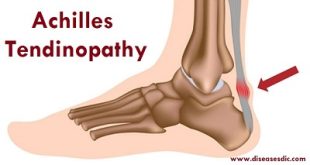Definition
Animal bites are common. Most are caused by dogs and cats. Cat bites can look minor, but they can be serious because a fang puncture can leave bacteria deep in the wound.
Animal bite wound
Epidemiology
The lack of standard reporting in many countries makes accurate estimates of mammalian bite incidence difficult to determine. Depending on locale, the range of animals inflicting bites is wide and includes large cats (tigers, lions, leopards), wild dogs, hyenas, wolves (Eurasia), crocodiles, and other reptiles. As in the United States, most bites, however, are from domestic dogs. In developing countries, mammalian bites (especially bites by dogs, cats, foxes, skunks, and raccoons) carry a high risk of rabies infection.
Types
The location and type of the injury depends upon the animal inflicting the bite.
Dog bites: Victims of dog bites frequently know the dog that attacked them. Most dog bites occur in children, with the highest number seen in boys between the ages of five and nine years old. The head and neck are the most common site of bites in children up to age 10 years, probably because a child’s head is close to the level of a large dog’s mouth. The arms and legs, particularly the right hand, are the most frequent site of injury for older children and adults. A dog bite can lead to a range of injuries, including scratches, deep open cuts, puncture wounds, crush injuries, and tearing away of a body part. Dog bites rarely cause death.
Certain breeds of dog are more commonly associated with bites. German Shepherds, pit bull terriers, and mixed breeds account for the majority of dog bite injuries.
Cat bites: Cats can cause wounds with their teeth or claws. Two-thirds of cat bites involve the upper extremities (arms and hands). Scratches typically occur on the upper extremities or face.
Deep puncture wounds are of particular concern because cats have long, slender, sharp teeth. When the hand is bitten, bacteria can get into the tissue that surrounds the bones or into a joint and result in osteomyelitis (infection of the bone) or septic arthritis (infection of the joint).
If infection occurs, it generally progresses rapidly, causing skin redness, swelling, and intense pain as quickly as 12 to 24 hours after the bite.
Rodent bites: Rats cause the majority of rodent bites. Most bites occur at night on the face or hands in children five years old or younger.
Human bites: Children are the most common victims of human bites, usually as a result of aggressive play with another child. Human bites can cause a semicircular or oval area of skin redness or bruising, and the skin may be punctured. Human bites are typically located on the face, upper extremities, or trunk (chest or abdomen).
Other types of bites: The bites of most other animals, such as squirrels, rabbits, and guinea pigs, are generally treated the same way as cat bites.
Risk factors
Cat bites carry a much higher risk of infection than dog bites.
Other risk factors that increase the chances of a bite turning into an infection include:
- Not thoroughly and swiftly washing the bite
- The bite caused a deep wound
- The bite also caused a fracture or other damage
- A weakened immune system
Causes
- Infection from animal bites is caused by bacteria. The bacteria can be found in the mouth or saliva of the animal. The bacteria then enter the wound after being on the skin. The bacteria can also be present in the environment.
- Animal bites are often polymicrobial, which means that multiple species of bacteria are involved.
- Tetanus, a bacterial disease affecting the nervous system, can develop from the bacteria. This is a serious condition. Puncture wounds from animal bites are the most likely to lead to tetanus.
Symptoms of animal bites
Your doctor should examine any animal bites. Immediate medical attention may not always be possible, but you should get the bite checked by your doctor as soon as possible. Once a bite has occurred, it’s important to be on the lookout for signs or symptoms of infection.
The following symptoms may indicate infection or the presence of debris in your wound:
- Localized redness around your wound
- Warmth around the bite area
- Red streaks leading away from the bite
- Fever
- Pus
- Swelling
- Pain
Complications of animal bites
Infection is the main complication that arises from animal bites and bites from humans. Infected bites rarely cause any serious problems, as long as they are promptly treated using antibiotics. However, if left untreated, an infection can cause serious complications including:
- Blood poisoning (sepsis)
- Swelling and stiffening of the joints
- Tissue damage
Diagnosis and Treatment
Your doctor will assess your risk of infection, check for additional injuries, and attempt to minimize scarring. Examinations following an animal bite usually involve the following:
Inspection
Wounds are thoroughly examined for debris. Your wound may be treated with a numbing agent before your doctor examines it.
X-Rays
Your doctor can order X-rays to check for bone fractures. An X-ray can also help them ensure there’s no debris in the wound that isn’t visible upon inspection. Certain types of foreign material such as dirt or grass are easy to overlook.
Irrigation
Your doctor will irrigate the wound to clean it properly. This is important to prevent infection. Irrigation may not always prevent infection, but it does reduce the risk. A local anesthetic may be used to minimize pain.
Debridement
Animal bites can result in skin tears that can’t be repaired. A procedure known as debridement may be necessary to remove dead or infected skin and tissue that can’t be repaired. Debridement can sometimes be painful. You may need a local anesthetic for this procedure.
Closure
Puncture wounds aren’t usually closed with stitches. But some wounds must be sutured, or stitched, immediately after the bite.
Wound Care
Your doctor may recommend different methods of wound care, based on the injury you sustained. Wounds that have been sutured should be kept clean and dry. Showering may be permitted, but the injury should be dried softly to avoid damaging the sutures. Wounds that aren’t sutured may require daily soaking or other treatments.
Antibiotics may be prescribed to prevent infection resulting from an animal bite. The following types of bites usually warrant antibiotics:
- Cat bites
- Wounds that require debriding
- Heavily contaminated wounds
Antibiotics are usually prescribed to older adults or people who have chronic medical conditions such as diabetes.
Most bite wounds can be treated with over-the-counter pain medications, such as acetaminophen or ibuprofen. If your bite is severe, your doctor might prescribe a stronger pain medication for short-term pain relief.
Prevention of animal bites
Lowering the risk of being bitten by an animal is fairly easy. You can do this by using common sense and remembering the following:
- Avoid contact with unknown animals.
- Never feed or attempt to catch wild animals, such as squirrels, raccoons, or rats.
- Avoid disturbing animals that are known for caring for their babies.
- Never engage in aggressive playing with animals. A family dog can accidentally bite you during a friendly game of tug-of-war.
- Never stick your fingers into animal cages.
Unless the bite is completely unprovoked or the animal is sick, most bites can be prevented easily.
 Diseases Treatments Dictionary This is complete solution to read all diseases treatments Which covers Prevention, Causes, Symptoms, Medical Terms, Drugs, Prescription, Natural Remedies with cures and Treatments. Most of the common diseases were listed in names, split with categories.
Diseases Treatments Dictionary This is complete solution to read all diseases treatments Which covers Prevention, Causes, Symptoms, Medical Terms, Drugs, Prescription, Natural Remedies with cures and Treatments. Most of the common diseases were listed in names, split with categories.








useful information
good and educative, I learnt a lot, thanks
A street dog, since last few days suffering from Magote Infection related disease.Really I feel deeply frustrated.Kindly save that Dog by giving your Valuable openion soon.
Please consult a veterinary doctor to save the dog from the disease.